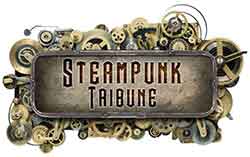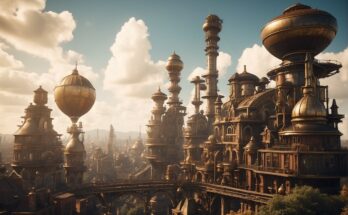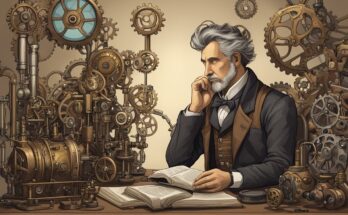Artistic rendition of the World’s Fair of 1893After having a discussion with a congenial young lady, I came to a disturbing realization the very historical foundations that Steampunk (and to a lesser extent, Victoriana) are founded upon, are often misunderstood or smiply unknown. The “Steampunk Era”, from the 1830s to the 1890s (more or less), was rife with amazing facts, trivia, major wars, and amazing technological innovations for the time (of which Steampunk extrapolates them in a steam/mechanical divergence, vice our RL electrical/electronic temporal flow).This small blog is by no means a font of wisdom regarding Steampunk for that, I would recommend Brass Goggles (by the industrious Miss Tinkergirl), the Aether Emporium, or the Wiki for Steampunk. Still, I hope to contribute a bit to the understanding of the RL historical background that Steampunk is based upon and as such, will begin (with this entry) inserting more historical events that (at least, I perceive) influenced the current revival and development of Steampunk. Although I will attempt to limit myself to the era between 1830-1900, I will occasionally touch upon the “Edwardian” era (1900-1910), and perhaps a few topics beyond this (never veering too far into the 20th century). Short little articles, nothing too long or boring, but ideally something that can tie in with the beloved genre…———-
Worlds Columbia Exposition of 1893
To celebrate the 400th anniversary of Christophers Columbus first voyage to the New World, the city of Chicago staged a massive worlds fair in 1893 that was one of the most widely attended events of the nineteenth-century United States. More than 27 million people visited the 200 gaudy building erected at the sprawling fairgrounds south of downtown Chicago at a time when the total population of the United States was only about 63 million.
The “Woman’s Building” of the Exposition of 1893The fairs “White City”, an elaborate complex of Beau Arts buildings designed by famed architects Frederick Law Olmstead (1822-1903) and Daniel Burnham (1846-1912), featured thousands of exhibits showcasing the industrial progress of the United States. Visitors to the fair could marvel at demonstrations of electric light, sewing machines, elevated trains, skyscrapers, and other recent American technological innovations. The Ferris wheel, which made its debut at the fair and cost the (then princely) sum of 50 cents, was one of the events major attractions.
The first Ferris wheel, named after its inventorHugely popular, the fair was a major event in American cultural history and helped fashion the modern self-image of the United States as a land of progress and optimism. The fairs 65,000 exhibits presented a triumphant history of American innovation and promised a great future for the prosperous nation. Far surpassing any worlds fair held in Europe, the exposition capped off the Guilded Age of the United States with a symphony of awe-inspiring excess. For the city of Chicago, the fair marked the completion of its recover from the devastating Great Chicago Fire of 1871.
The Ho-o-den Imperial Japanses ExpositionIn total, the exposition covered 633 acres, took 40,000 workers three years to build, and remained open to the public for six months. Afterwards, all but two buildings at the site were demolished. The University of Chicago now occupies most of the area. Chicagos Museum of Science and Industry is the only major building that remains of the once-vast fairgrounds.
Additional Facts
1) Chicago got its nickname “The Wind City” from a New York City paper editor who thought Chicagoans were a bunch of windbags with all their boasting about the fair. The rugged winds off Lake Michigan served to cement the appellation.
2) Chicago mayor Carter Harrison was assassinated by a disgruntled job seeker at the fair two days before it closed.
3) One exhibit at the fair was a map of the United States made entirely of pickles.
Ref: Kidder, D. & Oppenheim, N.,(2007). The Intellectual Devotional American History. Modern Times, p. 215, New York: New York.Ed. Note.
The outstanding book, Devil in the White City, provides an intriguing insight into the construction of the Expo (which turns out to have been much less certain at the time), along with the events of the true case of the United States first serial killer. A New York Times Best seller.
UCLA has a “real time” simulation of the Worlds Fair of 1893, designed by its Urban Simulation Team. Stunningly recreated, I can only fantisize about a SL worlds fair, but it perhaps would look as suchhttp://www.ust.ucla.edu/ustweb/Projects/columbian_expo.htm



